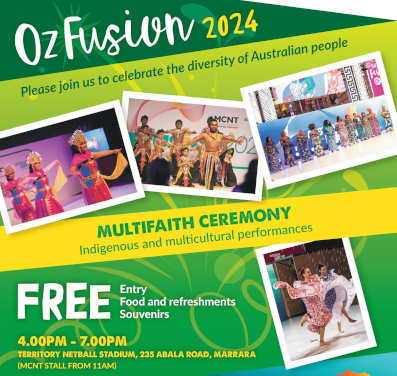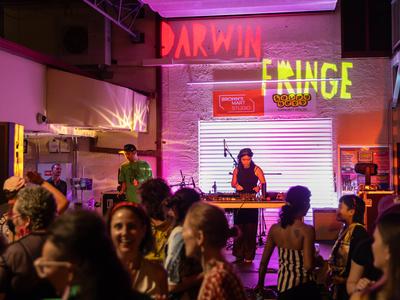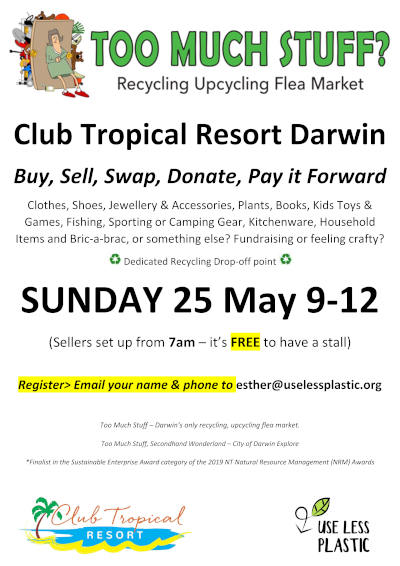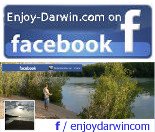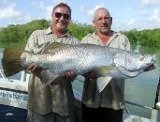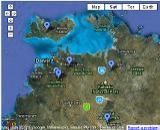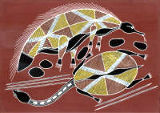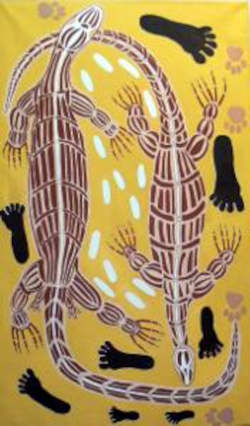Menu
Search this site
- Enjoy Darwin
- This Page
Please check with the advertised contact for any updates or changes to an advertised service.
ABC radio technology 1971
by Robert Davis
(Batchelor NT)
howl in 1971 Volvo
My wife and I left Perth in early 1972 for a 7 month round Australia camping trip in our new Volvo 2 door sedan.
By the time we reached Darwin, there was a distinctive diff howl at higher speeds. I became aware that this was the only car of it's type in the region, and Volvo in Perth required proof of the noise.
With no local expert knowledge of the car available in Darwin, I did not know who to turn to, so I entered the ABC Studio in Darwin, spoke to Mike Yeates, whom I had never met before, he was the sound technician at the studio. I told him I required a sound recording of the diff howl at various identified speeds.
He offered to record the sounds for me, at no cost. He strapped a microphone to the car, and he directed me to a good but isolated road out in the bush, running parallel to Darwin Airport, to its North. This I now know as McMillans Rd. We kicked up the speed to 70 miles per hour, Mike calling the speeds as the diff howl came in at the various speeds.
Mike made a great accurate recording, which well and truly convinced Volvo of the problem, which they arranged to repair at a later time in Brisbane.
At the time we were camped at a caravan park located at the Eastern end of the Darwin airport runway. Every time a plane took off, it flew directly overhead, and one could just about touch them, they were pretty low to the ground.
I think the place was blown away in cyclone Tracy, for I never was able to locate evidence of it after I came to live in Darwin on the first day of self government.
I was very touched by Mikes generosity, and we became friends. Following the recording of the diff howl, Mike invited us to vacate the noisy camping ground, and stay with him in his family house in Gordon St Parap until we had to move on to complete our trip.
Mike was a very keen fisherman, and told us of all the great fishing spots toward the East Aligator River. The bitumin Road finished at about what is now Windows on the Wetland area, and it was two wheel tracks from then on, all the way through Yellow waters, and to the East Alligator where we camped on the Western end of Cahils Crossing for about a month.
As we aproached the crossing, The drillers were working all around us on either side of the track as we drove over what was to become Ranger Uranium Mine.
My wife and I lived pretty much on fish alone, as we soaked up this wonderful experience. We had a six foot pram dinghy and tiny outboard motor, and every day we would explore upriver from the crossing, going up with the tidal bore. There were crocodiles, but not like they are now.
One evening just on dark, I was boating my way back to the crossing, when I saw a fire close to my camp. A paper bark tree was alight, looking like a giant Roman candle. Upon my arrival, I could hear aboriginal ceremony taking place not too far distant, at the burning tree. It was, the countrymen told me as they wandered to and fro accross the crossing at low tide, a special ceremony for a family member who had been struck by lightning. The ceremony continued on and off for about a week.
I shared my daily catch of fish with them as they walked past. I was very surprised and pleased, when the music man offered me his didgeridoo after the ceremony finished. It was just an unmarked natural wood piece, and I still have it. As he gave it to me, he gave me a lesson in playing, which went something like this. "you just go (couple of raspberry sounds) and thats all you have to do". I eventually "got it" after months of trying long after I left the Territory.
I was tickled as the chap walked to and fro accross the crossing, in the moonlight. He had what were once white shorts, and he also had a white bandage on one of his ankles. He as a person could not be seen in the dark, but his shorts and bandage were lit up by the moon, creating an eerie spectacle as the shorts appeared to glide a few feet above ground, and the bandge would rapidly move forward, at ground level, then stop , move forward, stop, etc as he walked toward our camp.
We left the Territory, returning to Perth, but after a couple of years, the memories of the Top End became too strong, and we returned to Darwin soon after Cyclone Tracy.
We lived at Mindle Beach caravan Park where the casino is now, and we were the last caravan to pull out before it was destroyed to make way for the casino. Our caravan site was immediately above the rock retaining wall which is still there, and I would walk from my work in the city, put my dinghy(a bigger one than I had on the East Alligator)into the water, go out to the point, and catch a couple of fish for tea. We bought a cyclone damaged house in the next bay, near Kahlin Oval. I then put my dinghy into cullen bay, and caught tea. The derro's used to camp on the beach, and take shelter among the coffee bushes, and they always helped me to get my dinghy out of the water, and I would give them fish for their trouble.
The proposed marina development put paid to all that, and we sold the house, and moved to Batchelor in 1985 to build a caravan park.
Comments for ABC radio technology 1971
|
||
|
||
Darwin Community
Add your own Information or Comment on Articles in these Community Pages.
Community
- Art & Craft
- Clubs & Groups
- Community Forum
- Fishing
- Fishing Clubs
- Musicians
- Social Dancing
- Sports & Recreation
- Survival Guide
- Venues for Hire
Buy/Sell
History
 Community Banks® return profits to the community.
Community Banks® return profits to the community.


